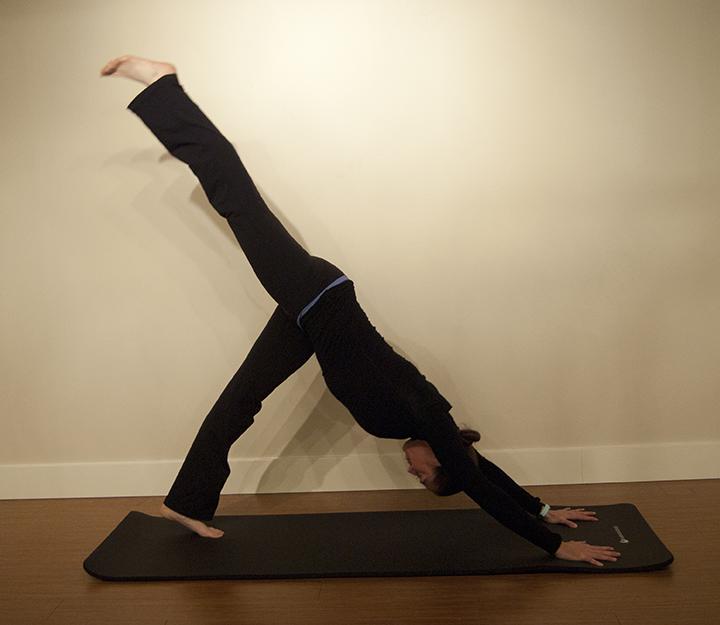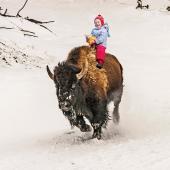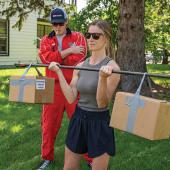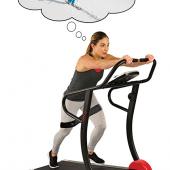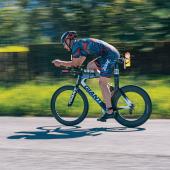New-Age Fitness
I used to think yoga was for sissies, Pilates for the lazy, and Rolf—who the heck is he? As I’ve managed to mature (just a little) through a series of unfortunate mishaps—a torn ACL courtesy of skiing, a strained hamstring (this one compliments of a Bridger Ridge Run training jaunt), and two strained iliotibial bands kindly provided by my stubborn capacity to overtrain on my mountain bike—I’ve had my come-to-Jesus moment with this thing called new-age fitness. (I think given a chance I could have made this transition sans all the pain and agony, but puhleese, that’s just not my way.) Frankly, I find it kind of interesting that yoga, Pilates, and Rolf are considered new-age fitness given that they’ve been around anywhere between 50 and 5,000 years.
All three disciplines have been steeped in the concept of natural healing—the blending of body, mind, and spirit in order to heal thyself. The benefits therein (including balance, strength, flexibility, endurance, core strength, range of motion, increased muscular and mental coordination, improvement in bone density, and joint health to name a few) have been noticed by athletes—on the national and Bozeman scene—of all levels and sports. Though these benefits accrue from all three, their approaches vary to some degree. In unison, they provide a literal smorgasbord of life-changing fitness for those of us who want to improve our performance level and of course for those of us who suffer from having too much fun outside (aka, sports injuries).
Rolfing: Gravity Be Damned!
Rolfing’s primary concept is to kick butt on gravity and its detrimental effects on your body—are you slumping in that chair while you’re reading this? Many of us are out of whack with gravity and have problems with both balance and body alignment; the negative effects from this multiply in a sports situation. Rolfing helps to realign you through several sessions of hands-on “Structural Integration.” Dr. Ida Rolf began experimenting with alternative healing in the mid-1900s trying to remedy her own health problems, and early in her career she worked extensively with chronically disabled people. Techniques in deep-tissue massage, myofascial release work, and postural integration owe their origin and roots to Rolfing. For us sports nuts, consider how a trauma in one area—a hamstring pull, for instance—contributes to overcompensation and subsequent injury in another leg, hip, or other body part. Like a good auto mechanic, a certified Rolfer manipulates your body’s connective tissue to organize your whole body to gravity and help align these and other issues. Rolfing’s bodywork and movement education dovetail nicely with Pilates and yoga exercise movements.
Pilates: Core Strength
Although Pilates and Yoga share more similarities in terms of body movement than Rolfing, they differ in their approach. Trainers and certification organizations have expanded and sometimes modified Pilates’ original set of 34 exercises. However, their main focus, whether you are working in a mat class or on their specialized equipment, remains on strengthening—especially working on core strength—and stretching the body. It took me a while to get into Pilates because the moves are subtle and it takes some real concentration to feel the burn where you’re supposed to—a challenge for us aerobophobes. Like Rolfing, it’s a matter of slowing down to capture both the movement and the benefit, and the benefits are huge. I haven’t tried Rolfing yet, but between yoga and Pilates I’m a much stronger and safer skier, I’ve increased both my speed and stability, and I am much more balanced and stronger in the crud.
Yoga: Balance, Strength & Flexibility
Interestingly enough, both Joseph Pilates and Dr. Rolf had a strong background in yoga prior to developing their own disciplines. Though there doesn’t seem to be a definitive answer on who actually invented yoga, archaeologists have found stone seals illustrating figures in yoga poses dating back to 3,000 BC. The most difficult part of starting a yoga practice might be trying to decide which one is right for you, from Ashtanga to Hatha, Bikram, Anusara, Kundalini, and more, including several multi-disciplinary styles. The key however, is to start. Bikram, known as hot yoga due to the 105-degree room it’s practiced in, is a real workout taking you through 26 fixed postures, roughly half of which are completed standing (the remainder are done on your mat). Ashtanga, known as power yoga, is every bit as challenging with its intense and fast-paced series of postures that are both physically and mentally demanding. I like to mix them up, utilizing Bikram’s regimented workout for those days when I’m too tired to think but have the energy, and Ashtanga when I want both a mental and physical challenge. In my experience, Hatha, Iyengar, and multi-disciplinary styles offered by several are perhaps less challenging aerobically but still mete out the benefits of strength, flexibility, and balance. I’ve found these classes to be great pre-or post-workout classes, and all of them have helped me work through the injuries that I seem to pick up like a bad cold.
Rolfing, Pilates, and yoga are great cross-training tools for all athletes due to their litany of awesome physical benefits—and guess what, they also stimulate your noodle. After participating, my hip thanks me, and so do my ankle, knee, and various other body parts, especially when I’m skiing, biking, and whatever else I can do outside. To me they are Health and Wellness 101, my daily vitamin, and I wouldn’t leave home without them!

